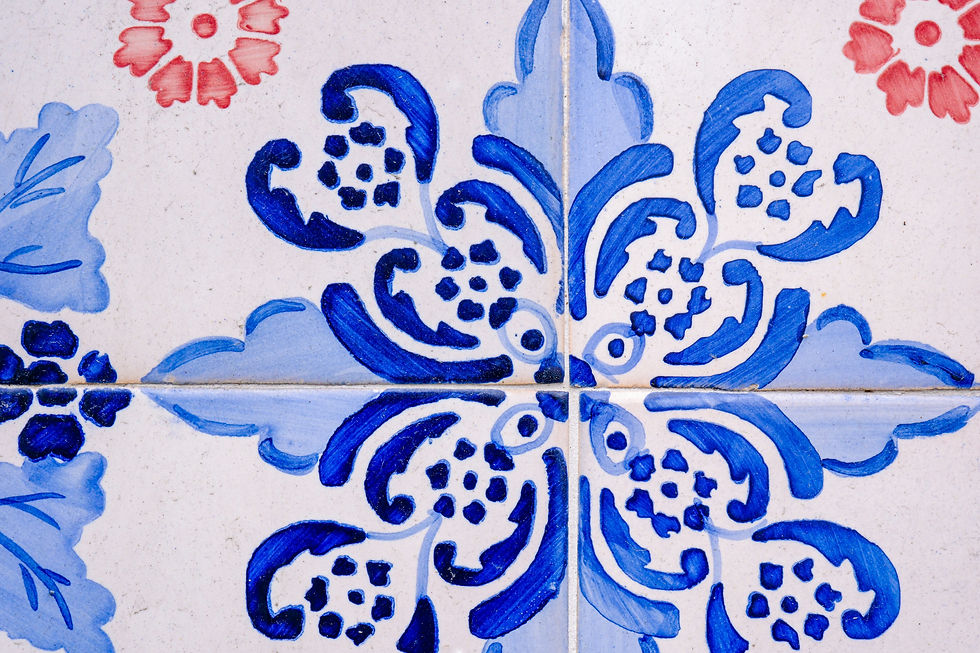Digital Print Fabric: The Future of Textile Design Explained!
- Soundarya
- Jul 28
- 4 min read
Updated: Aug 7

Digital print fabric has revolutionized the textile industry, allowing for vibrant, intricate designs to be printed directly onto fabric. How to print a digital image on fabric? The process begins with a digital image that is uploaded to a specialized printer. This printer uses inkjet technology to apply the image onto the fabric, layer by layer, ensuring that every detail is captured. The fabric is often pre-treated to enhance ink adhesion and color vibrancy. Once printed, the fabric may undergo a heat-setting process to ensure durability and longevity.
So, what is a digital print on fabric? It refers to the method of printing designs directly onto textiles using digital technology. Unlike traditional printing methods, which often require screens or plates, digital printing allows for more complex designs and a wider range of colors. This technique is not only efficient but also environmentally friendly, as it minimizes waste and allows for on-demand production.
When and Where - When did digital print fabric emerge?
The technology began to take shape in the late 20th century, with significant advancements occurring in the 1990s. The introduction of inkjet printers specifically designed for textiles marked a turning point, enabling designers to experiment with digital designs on fabric. Where is digital print fabric commonly used? It has found applications in various sectors, including fashion, home décor, and upholstery. Designers and manufacturers appreciate the flexibility and creativity that digital printing offers, allowing for unique, custom designs that cater to individual tastes.
Who benefits from digital print fabric?
Designers, manufacturers, and consumers alike enjoy the advantages of this technology. Designers can create intricate patterns without the limitations of traditional printing methods, while manufacturers can produce smaller runs of fabric without incurring high costs. Why is digital printing preferred over traditional methods? The ability to print on demand reduces waste and allows for rapid prototyping, making it an attractive option for businesses looking to stay competitive in a fast-paced market. Which fabrics are suitable for digital printing? A wide range of materials, including cotton, polyester, and silk, can be used, making it a versatile choice for various applications.
Important Facts About Digital Print Fabric
Digital print fabric is characterized by its ability to produce high-quality images with vibrant colors and intricate details. One of the most significant advantages is the reduced setup time compared to traditional printing methods, which often require extensive preparation. Additionally, digital printing allows for customization, enabling designers to create unique patterns tailored to specific customer needs.
Another important fact is that digital prints can be produced in smaller quantities, making it easier for businesses to manage inventory and reduce waste. This on-demand production model is particularly beneficial for small businesses and independent designers who may not have the resources for large-scale manufacturing. Furthermore, advancements in ink technology have improved the durability of digitally printed fabrics, addressing concerns about fading and wear over time.
Top 7 Differences Between Digital Print and Regular Print
Setup Process: Digital printing requires minimal setup compared to regular printing, which often involves creating screens or plates. This makes digital printing more efficient for small runs.
Color Range: Digital printing can produce a wider range of colors and intricate designs, while regular printing may be limited by the number of screens used.
Customization: Digital prints allow for easy customization, enabling designers to create unique patterns without additional costs. Regular printing often requires a minimum order quantity.
Production Speed: Digital printing is generally faster, especially for short runs, as it eliminates the need for extensive setup time.
Environmental Impact: Digital printing is more eco-friendly, as it generates less waste and uses less water compared to traditional methods.
Durability: While both methods can produce durable fabrics, advancements in digital printing technology have improved the longevity of digitally printed fabrics.
Cost: Digital printing can be more cost-effective for small runs, while regular printing may be more economical for large quantities.
Pros and Cons of Digital Print Fabric
Pros:
High-quality images with vibrant colors
Customization options
Reduced waste and environmental impact
Faster production times
Cons:
Initial investment in technology can be high
Some fabrics may require special treatment for optimal results
Digital printing applies ink directly onto fabric, while embroidery involves stitching designs onto the fabric.
Conclusion
In conclusion, digital print fabric represents a significant advancement in textile printing technology. How to print a digital image on fabric has become a straightforward process, allowing for creativity and customization in ways that traditional methods cannot match. As we explore what is a digital print on fabric, it becomes clear that this technique offers numerous benefits, including high-quality results and reduced environmental impact.
The question of does digitally printed fabric fade is often raised, but with advancements in technology, the durability of these prints has improved significantly. Understanding what is the difference between digital print and regular print is essential for anyone in the textile industry, as it highlights the advantages of digital methods. Ultimately, is digital printing good quality? The answer is a resounding yes, making it a preferred choice for designers and consumers alike. As the industry continues to evolve, digital print fabric will undoubtedly play a crucial role in shaping the future of textiles.



Comments